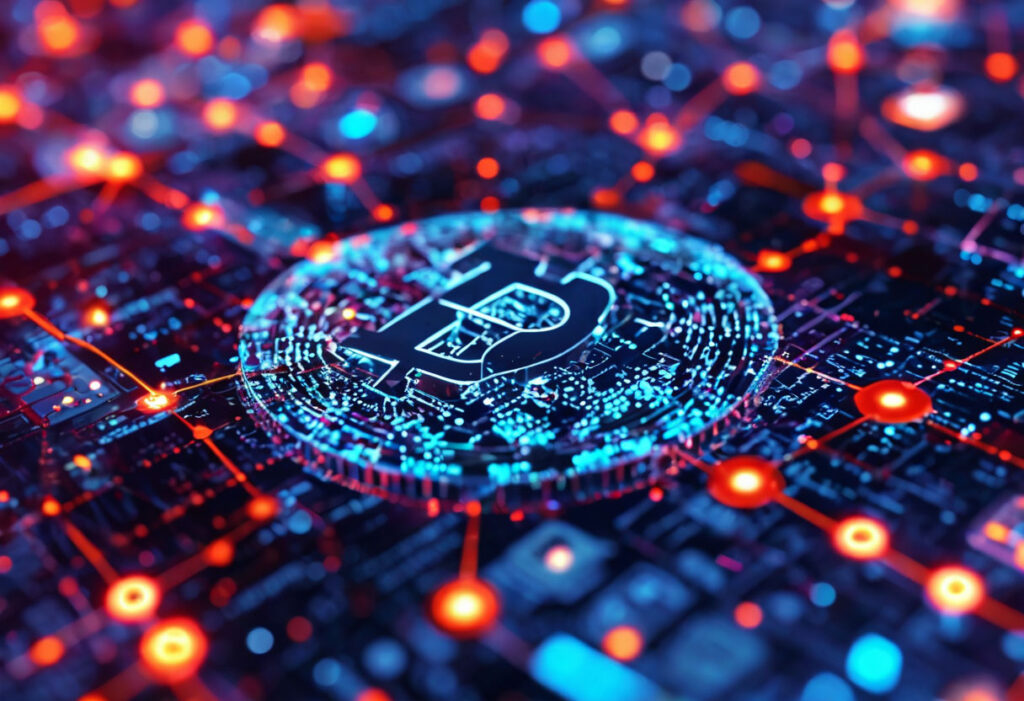Visa’s Strategic Expansion into Stablecoin Infrastructure
Visa’s move to support more stablecoins across four blockchain networks marks a big step in blending digital assets with traditional finance. Honestly, this infrastructure boost adds four new stablecoins on different blockchains, expanding beyond current ones like Circle’s USDC, Euro Coin, PayPal USD, and Global Dollar. By using blockchain tech, Visa aims to improve financial services. Since 2020, the company has handled $140 billion in crypto and stablecoin flows, with consumer spending jumping four times in the last quarter. Visa CEO Ryan McInerney pointed out “particular momentum with stablecoins,” as monthly volume hit a $2.5 billion annualized rate. This effort connects old-school finance with digital systems, unlike decentralized models that skip intermediaries.
Key Benefits of Visa’s Stablecoin Strategy
- Faster cross-border payments with quick settlements
- Links to over 25 fiat currencies worldwide
- Secure deals through Visa’s compliance checks
- Helps banks create and remove stablecoins via the Visa tokenized asset platform
On that note, this approach fits with how institutions are adopting stablecoins, putting Visa at the front of digital payments.
Institutional Adoption Driving Stablecoin Market Evolution
The stablecoin market has exploded, with transaction volumes reaching $46 trillion last year—up 87%. Market cap is over $300 billion, showing broad use. Big players like BlackRock, Visa, Fidelity, and JPMorgan Chase are pushing this, employing stablecoins for efficient cross-border deals and treasury work. Blockchain upgrades now allow over 3,400 transactions per second, boosting scale. Partnerships, such as Citigroup with Coinbase, and clearer rules like the GENIUS Act and MiCA, support growth. Unlike retail speculation, institutions focus on long-term gains, which steadies markets. Debopama Sen said, “Stablecoins will be another enabler in the digital payment ecosystem and it’ll help grow the space, it’ll help grow functionality for our clients.”
Institutional vs. Retail Stablecoin Use
- Institutions: Stress efficiency in payments and settlements
- Retail: Often dabble in speculative trades
- Impact: Institutional demand gives steady support
Anyway, this maturity helps weave stablecoins into global finance.
Regulatory Frameworks Shaping Stablecoin Development
Clear regulations are key for stablecoin growth, mixing innovation with consumer safety. The GENIUS Act in the US sets rules for stablecoin issuers, involving the US Treasury and Federal Reserve, and lets non-banks issue payment stablecoins. In Europe, MiCA demands full collateral and audits, with passporting for EU-wide ops. Circle met MiCA standards early, easing entry. Japan’s Payment Services Act limits issuance to licensed firms with full collateral; banks like Mitsubishi UFJ Financial Group are making yen-pegged stablecoins. Sarah Chen noted, “The key challenge is balancing innovation with stability – we need robust risk management frameworks that can evolve with the technology.”
Comparison of Regulatory Approaches
- US: Fosters competition among issuers
- Europe: Puts consumer safety first with tough rules
- Japan: Blends with traditional finance for trust
You know, these frameworks build confidence and enable smoother cross-border work.
Technological Innovations Enhancing Stablecoin Infrastructure
Tech advances are reshaping stablecoin infrastructure with smart payments and better security. Blockchain improvements handle over 3,400 transactions per second, aiding cross-border use. Synthetic stablecoins like Ethena‘s USDe apply algorithms for stability and yield, while yield-bearing types like MegaETH’s USDm rely on tokenized US Treasury bills. Cross-chain tools from LayerZero boost connectivity, and zero-knowledge proofs enhance privacy. John Delaney remarked, “The safest way to manage stablecoin reserves and ensure every token is fully backed is to invest those reserves in government bonds.”
Types of Stablecoin Innovations
- Algorithmic: Use hedging for steadiness
- Collateralized: Backed by assets like bonds
- Hybrid: Mix methods for risk control
On that note, these changes drive adoption with lower costs and new features.
Cross-Border Payment Innovations and Market Impact
Stablecoins are changing cross-border payments by cutting inefficiencies. Zelle’s parent, Early Warning Services, integrates stablecoins for global transfers, building on fast domestic service. Western Union tests stablecoin settlements to reduce reliance on old banking, aiming for speed across 150 million customers. ClearBank teams with Circle on the Circle Payments Network, using USDC and EURC under MiCA. Devin McGranahan stated, “We see significant opportunities for us to be able to move money faster with greater transparency and at lower cost without compromising compliance or customer trust.”
Advantages of Stablecoin Cross-Border Payments
- Quicker settlements than traditional ways
- Lower fees for users and firms
- Better clarity and rule-following
Anyway, this integration makes global finance more effective.
Emerging Market Dynamics and Financial Inclusion
Emerging markets are quickly adopting stablecoins due to economic troubles and poor banking. In places like Venezuela and Argentina, dollar-pegged stablecoins fight hyperinflation. Brazil uses real-denominated stablecoins like Crown’s BRLV for high-return investments in government bonds, with yields near 14%. The Central Bank of Brazil’s Selic rate at 15% backs this, as Brazil tops Latin America in crypto deals. Maria Silva, Fintech Analyst, said, “Brazil’s stablecoin market is set to grow as institutions seek yield and efficiency in emerging markets.”
Stablecoin Uses in Emerging Markets
- Value storage: Shields from local money drops
- Remittances: Offers cheaper, faster sends
- Investments: Opens doors to global products
You know, this boosts financial access in shaky economies.
Risk Assessment and Future Market Outlook
Stablecoins face risks like regulatory holes, tech failures, and depegging. Events such as Hyperliquid‘s outage show the need for strong oversight. Synthetic stablecoins have algorithm risks, while focus in emerging markets might spark redemptions in crises. The European Systemic Risk Board warns of supervision issues. Fully backed stablecoins like USDT and USDC have less depegging danger but struggle with reserve clarity. Takeshi Chino stressed, “Stablecoins are crucial for the broader financial ecosystem and that these assets will fill an important role in financial services and are vital for Web3 adoption.”
Key Risks and Mitigations
- Regulatory gaps: Push for clear global standards
- Tech weaknesses: Fund secure systems
- Economic swings: Spread reserves and uses
On that note, despite risks, the future looks bright, with forecasts like Citigroup’s $4 trillion by 2030, fueled by innovation and institutional backing.

